
Caroline’s Harlequins aka Picasso
Maybe you are considering entering a juried show? Or maybe you have tried, not been accepted and now feel discouraged about your progress as an artist? I would like to share some of my thoughts on the importance (?) of juried shows. When is a better time than now? I am jurying a show this coming weekend and just had a painting accepted in the NWWS Open (see below, March 23).
First I am going to tell you a little story:
When I was learning to paint in watercolor in the 1970’s, after a while I entered a painting in a juried show. And was rejected. After a few days a neighbor said, “I am so sorry to hear you didn’t make the show.”
“How did you know about it?”
“Your husband told me.”
Before long this happened again. I went to my (practice) husband and said, “I wish you would stop telling people that I didn’t get in that show.” He seemed surprised, “I know I probably am not good enough yet but I wanted to try. If you will allow me to spend $40 a year entering shows, I may well get in before three years pass. However if we wait three years and then try, I still may not get in the show I try for. And in the meantime stop telling people.”
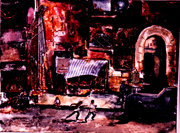 He agreed. Guess what? It wasn’t long before I made one. And then another. El Barrio (right) was in the National Arts League Show at the Salimagundi Club in New York City shortly before we moved to Oregon.
He agreed. Guess what? It wasn’t long before I made one. And then another. El Barrio (right) was in the National Arts League Show at the Salimagundi Club in New York City shortly before we moved to Oregon.
During those three years there was another painting, Waiting for the Bus (right), that I entered in four different shows. It was rejected twice and won awards twice. What one juror loves another turns down. It’s a crap shoot.
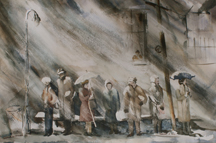 If THAT juror didn’t choose THAT painting, it doesn’t mean the painting is bad. It wasn’t a good fit.Try againif you want to… If you don’t, let it go.
If THAT juror didn’t choose THAT painting, it doesn’t mean the painting is bad. It wasn’t a good fit.Try againif you want to… If you don’t, let it go.
When we started inviting national jurors to jury the Watercolor Society of Oregon’s semi-annual shows, I was president of the society. All together I was present at the jurying of 8 WSO shows.
 Millard Sheets, our first national juror, looked at each painting as if he considered it a precious object. He would comment about something he saw that was good in it. And then sometimes he’d shake his head saying, “Isn’t it too bad he (or she) ….” name a flaw and set it with the rejects.
Millard Sheets, our first national juror, looked at each painting as if he considered it a precious object. He would comment about something he saw that was good in it. And then sometimes he’d shake his head saying, “Isn’t it too bad he (or she) ….” name a flaw and set it with the rejects.
In his talk to the membership, Millard said: know your techniques so your lack of knowledge doesn’t get in your way; know the art of the ages, By learning the art of the ages you develop your aesthetic sense. Then paint your passion.
What do YOU care about deeply? This is what you should be painting.
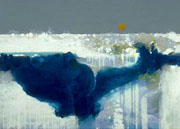 The next juror, Edward Betts, spent less than 15 seconds per painting. The show ended up reflecting his view of painting which focused on the importance of the design of the values. It was a strong show, bold, lacking in color.
The next juror, Edward Betts, spent less than 15 seconds per painting. The show ended up reflecting his view of painting which focused on the importance of the design of the values. It was a strong show, bold, lacking in color.
There was a juror who said he only liked warm colors. Blue, green and black were out, as well as diagonals.Guess what? I’d entered a sailboat heeled over in a NW gale. It didn’t even last 15 seconds.
 Rex and Joan Irving Brandt juried together. This was great for the go-fors since they discussed each decision out loud.
Rex and Joan Irving Brandt juried together. This was great for the go-fors since they discussed each decision out loud.
There were the WOW! paintings, the paintings with the extra something. The Brandts didn’t need to say much. Hours later, these that they had first included were the ones that ended up with the awards.
When Rex and Joannie were happy with the show they had included 20 painting more than WSO said was the limit. What to eliminate? They put “same” up against each other. Two vertical half-sheets of flowers. Only one got in. Two full sheet horizontals of the ocean, high horizons. One got in. Two barns in fields. One got in. Hint: a new take on an idea, beats a “seen that” composition every time.
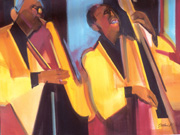 Christopher Schink wrote that he (as do I) thinks a watercolor should look fresh no matter how hard you worked on it. As he juried, he circled the space where all the paintings were leaning up against the wall. Toward the end, I started trying to see if I could guess which would go next. I was doing pretty well — I’d spot a painting where some part that wasn’t contributing to the whole seemed to call attention to itself. Out it would go.
Christopher Schink wrote that he (as do I) thinks a watercolor should look fresh no matter how hard you worked on it. As he juried, he circled the space where all the paintings were leaning up against the wall. Toward the end, I started trying to see if I could guess which would go next. I was doing pretty well — I’d spot a painting where some part that wasn’t contributing to the whole seemed to call attention to itself. Out it would go.
Brandt used to say every square inch of the painting should be contributing to the whole. Schink was spotting those that didn’t quite make the grade.
When I jury, and I must confess I am a relucant juror, the first question I ask myself is, “What is the artist trying to say with the means he or she chooses to use?” By this I mean, “What is this painting about?” That doesn’t mean the generic subject: a woman. But what ABOUT that woman, or horse, or landscape. What is the artist trying to say.”
Then I ask myself what is important to this artist in THIS painting?– shapes, values, colors. What is their use of light? Is it important. Do they like surface (crystal, silver)? Or texture? Strong realism, loose suggestion, or total abstraction? It doesn’t matter to me which is chosen. But, having chosen, how did the artists use the shapes, the colors, etc. to convey what it was they had to say?
And, bottom line, did they do it? Does it stand alone without explanation?
I believe a painting should have a life, a presence that is independent of the artist and of the viewer. This can be a quiet, evocative life or full of exitement. It is more than the subject.
For example here are paintings (one drawing) of women by four different artists:
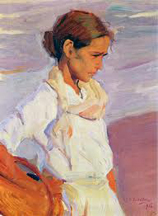
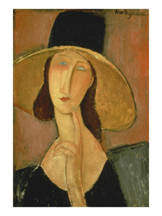
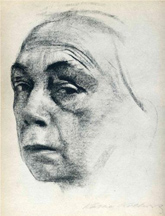
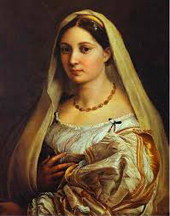
Each woman is quiet and contemplative. Each is placed in the format of the picture in a similar manner, although the self portrait of Kathe Kowlitz on the bottom left is of only the face.
What about the lack of color in her portrait? Does it heighten what you feel the artist is trying to say?
Which painting is more about shapes of color than a feeling of place?
Which uses light and shadow to model form and evoke the mysterious feel of darkness? Which uses light to create the feel of air, of summer? You can almost smell the sea.
Did the artists convey that each of these women has a rich interior life? Would you find any of these women easily approachable? Is that distance something that the artist is saying?
Do you think that each of the artists – Sorolla, Modigliani, Raphael, and Kollwitz — accomplish what they set out to do? Does each painting or drawing have a life separate from the artist and from you? Are they good, each in its own way?
Yet can you really say that one is better than the other? You can say which one moves you more. Or which one pleases you more. But better?
This dilemma is the problem of juried shows. What if you can only choose three – which one would you leave out? What if you could give only one award – to which would you give it? What would you say to the artists you didn’t choose when you meet them at the reception?
If it is so much apples vs. oranges(tomatoes vs peppers), why enter a show?
- You feel it is time to put your work up against others and see how you do. Val
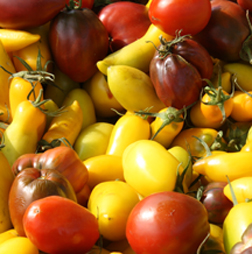 idation?
idation? - You want to get your work out there and share it with a larger audience, to become better known.
- You have completed a piece about which you are excited. You feel it is “show worthy.”
- You have a strong competitive streak and the challenge of competition makes you paint better. If you had to choose, you would rather make a show, win an award than sell a painting.
These are all reasons I have heard time and again. Just be sure and remember that, if you don’t get in or don’t get an award, it does not mean you are less an artist. Realize how, even with the best jurors, it is subjective. Indeed, they might judge the same group of paintings somewhat differently on another day. You too can try again, another day.
Congratulations when you make it! Let it go when you don’t. Just keep trying to paint paintings that please you. Keep defining what that is. Please yourself. Not them. Not him, or her. Your paintings are like Pinnochio waiting to be born from the craft of your hand and the insight of your mind.
Happy painting!
Caroline
© 2013, Caroline Buchanan
PS this is the April Technique Corner! I started working on it today and forgot that when I save, it posts. Busy April coming up. Not listed on the Technique Corner is a talk to the Orcas Palettes on April 12 on Cezanne and Gauguin influence in your paintings; the last of the Edmond Series on the 19-21; the reception of the NWWS show on the 25th. If I don’t see you at one of the April classes maybe I will see you at one of these other events.
